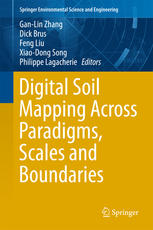

Most ebook files are in PDF format, so you can easily read them using various software such as Foxit Reader or directly on the Google Chrome browser.
Some ebook files are released by publishers in other formats such as .awz, .mobi, .epub, .fb2, etc. You may need to install specific software to read these formats on mobile/PC, such as Calibre.
Please read the tutorial at this link: https://ebookbell.com/faq
We offer FREE conversion to the popular formats you request; however, this may take some time. Therefore, right after payment, please email us, and we will try to provide the service as quickly as possible.
For some exceptional file formats or broken links (if any), please refrain from opening any disputes. Instead, email us first, and we will try to assist within a maximum of 6 hours.
EbookBell Team

4.4
32 reviewsThis book contains papers presented at the 6th Global Workshop on Digital Soil Mapping, held 11-14 November 2014 at the Institute of Soil Science, Chinese Academy of Sciences of Nanjing, China. Digital soil mapping is advancing on different fronts at different paces throughout the world. The researches and applications on DSM are moving from method development to realizations in different scales and regions, serving the generation of national and continental to global soil grids. Meanwhile, new ideas and insights on mapping complex soil-landscapes such as flat plains,anthropogenically altered agriculture and urban spaces are emerging, with the help of new paradigms and models.The goal of the sixth workshop was to review and discuss the state of the art in digital soil mapping, and to explore strategies for bridging research, production, and environmental applications.
This book provides a very useful and comprehensive overview of the status of digital soil mapping, in which graduate students, scientists and specialists working within the field of geography can find the spatial prediction approaches and related theory.